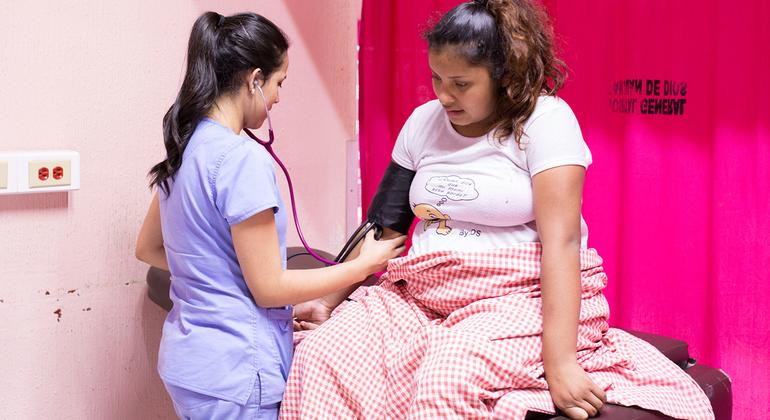While total fertility across the globe has fallen, the UNFPA report shows that women who began childbearing in adolescence, had almost five births by the time they reached 40, during the period examined in the report, between 2015 and 2019.
Gender-based and income inequalities are highlighted as key in fuelling teen pregnancies by increasing child marriage rates, keeping girls out of school, restricting their career aspirations, and limiting healthcare and information on safe, consensual sex.
Entrenching these inequalities are climate disasters, COVID-19 and conflict, which are all upending lives around the world, obliterating livelihoods and making it more difficult for girls to afford or even physically reach school and health services. This leaves tens of millions yet more vulnerable to child marriage and early pregnancy.
‘Glaring sign post’
“When nearly a third of all women in developing countries are becoming mothers during adolescence, it is clear the world is failing adolescent girls,” said UNFPA Executive Director Dr. Natalia Kanem. “The repeat pregnancies we see among adolescent mothers are a glaring signpost that they desperately need sexual and reproductive health information and services.”
After having their first child, additional childbearing in adolescence is common for child mothers, said UNFPA.
Among girls with a first birth at 14, or younger, nearly three quarters also have a second birth later in adolescence, and 40 per cent of those with two births, progress to a third birth before leaving the teen years.
Most births among girls under the age of 18 in 54 developing countries are reported as taking place within a marriage or union.
Although more than half of those pregnancies were classified as “intended”, young girls’ ability to decide whether to have children can be severely constrained. The report finds that adolescent pregnancy is often – albeit not always – driven by a lack of meaningful choice, limited agency, and even force or coercion, said UNFPA.
Vulnerable to grave rights violations
Complications from giving birth are a leading cause of death and injury for adolescent girls, but being an adolescent mother can also lead to other grave violations of their human rights and serious social consequences, including child marriage, intimate-partner violence and mental health issues.
And the youngest child mothers, face the highest risks.
Across the globe, there are encouraging signs of declining levels of motherhood in childhood and adolescence, said the UN agency.
But the pace of decline has been “alarmingly slow”, according to UNFPA, by some three percentage points, per decade.
“Governments need to invest in adolescent girls and help expand their opportunities, resources, and skillsets, thereby helping avoid early and unintended pregnancies,” said Dr. Kanem. “When girls can meaningfully chart their own life course, motherhood in childhood will grow increasingly rare.”
Recommendations
The report lays out recommendations for policymakers including the need to provide girls with comprehensive sexuality education, mentorship, social support, and quality health services.
It also calls on families to provide greater economic support, and engage local organizations, all within a supportive policy and legal framework that recognizes the rights, capacities and needs of adolescents, particularly marginalized adolescent girls.




